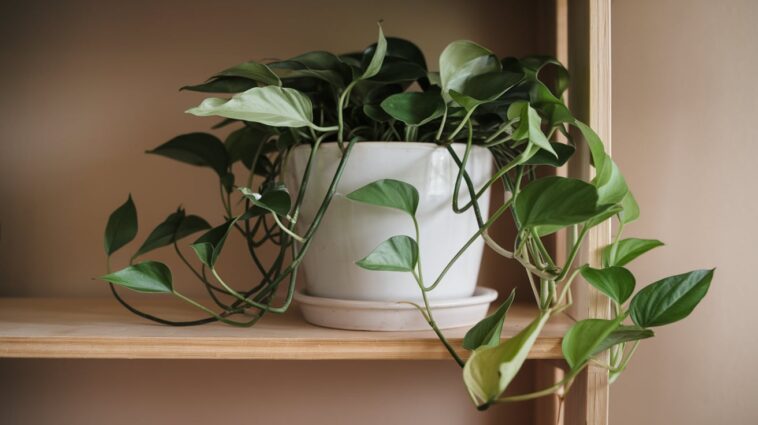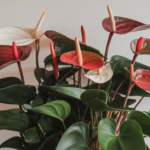I’ve always been drawn to houseplants and the happiness they bring to our homes. For beginners, plants like Pothos are ideal. They have beautiful heart-shaped leaves and vines that add greenery to any room.
Pothos plants are great because they can grow well in different light conditions. They are easy to care for, which means I can enjoy their benefits without much work. In this article, I’ll share my experience with Pothos. I’ll cover their adaptability and care tips to help you start your indoor gardening journey.
Why I Love Growing Pothos in My Home
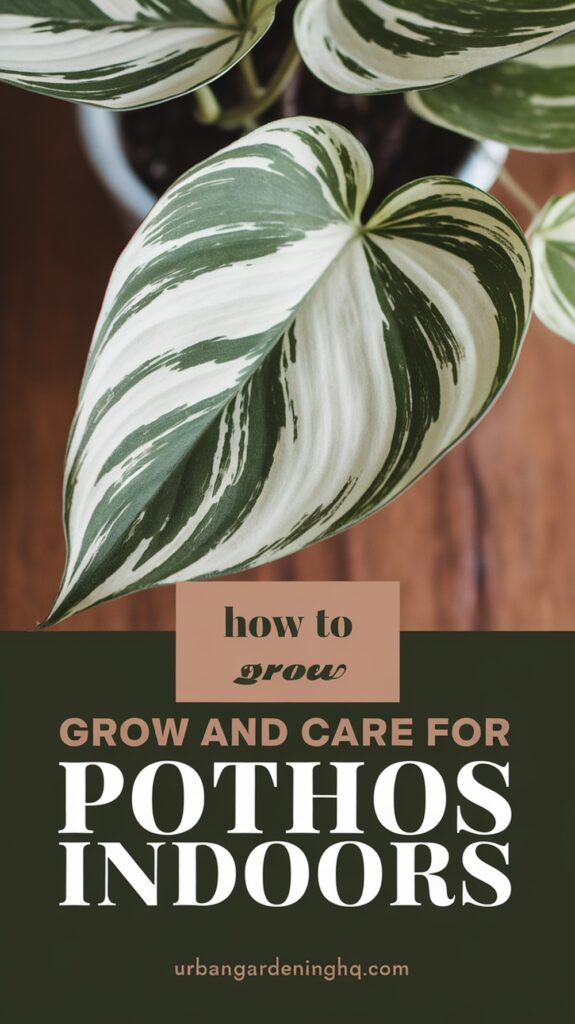
Growing Pothos plants has changed my life. They are easy to care for and can grow well in many light conditions. This makes them perfect for beginners in indoor gardening.
I’ve learned how to make my Pothos plants happy. I’m excited to share this knowledge with others.
Pothos plants are very adaptable. They can grow well in both bright and low-light areas. For more tips on growing Pothos, check out this resource.
My Journey with Pothos Plants
I started with a small Pothos plant. Over time, I’ve learned how to keep them healthy. Here are some key tips for plant care:
- Watering: Let the soil dry a bit before watering again
- Lighting: They do best in bright, indirect light
- Humidity: Keep the air humid to help them grow well
The Remarkable Adaptability of Pothos
Pothos plants can adapt to many environments. With the right care, they can thrive in various conditions. This makes them ideal for indoor gardening.
Understanding Different Pothos Varieties
Exploring Pothos varieties is fascinating. These houseplants are popular for being easy to care for. They bring greenery to any room. Identifying Pothos varieties can be tricky, but knowing their unique traits helps you pick the right one for your home.
Popular varieties include marble queen, neon Pothos, and golden Pothos. Each has its own look, like variegated leaves or bright colors. Whether you’re new to plants or not, discovering different Pothos varieties is fun. Here are key things to look for when identifying them:
- Leaf color and pattern: Pothos leaves vary in color and pattern, from solid green to marbled.
- Leaf shape and size: Leaves can be long and slender or short and rounded, depending on the variety.
- Growth habits: Some Pothos are compact and trailing, while others grow tall and upright.
Understanding these factors helps you choose the right Pothos variety. They’re great for adding greenery to your home because they’re easy to care for and versatile.
| Pothos Variety | Leaf Color and Pattern | Leaf Shape and Size | Growth Habits |
|---|---|---|---|
| Marble Queen | Variegated green and white | Heart-shaped, 4-8 inches long | Trailing, compact |
| Neon Pothos | Green with neon-like variegation | Heart-shaped, 4-8 inches long | Trailing, compact |
| Golden Pothos | Green with yellow variegation | Heart-shaped, 4-8 inches long | Upright, trailing |
Essential Light Requirements for Thriving Pothos
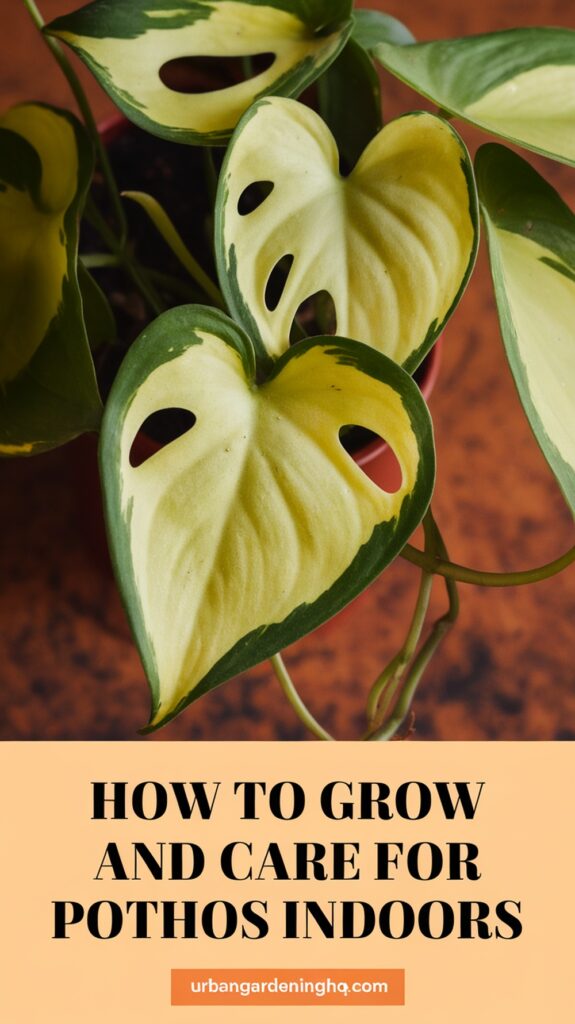
Understanding light needs is key for your Pothos’ health and growth. As an indoor gardening fan, I’ve found Pothos do well in bright, indirect light. We’ll look at what light is best for Pothos, including direct vs indirect light and seasonal changes.
To get the right light for your Pothos, consider these tips:
- East- or west-facing windows offer great indirect light
- South-facing windows are too strong, so use a sheer curtain to soften the light
- North-facing windows might not have enough light, so think about using grow lights
Knowing your Pothos’ light needs helps create a great indoor garden. Watch how your plant reacts to light and make changes if needed. This prevents problems like scorched leaves or weak stems.
| Lighting Condition | Pothos Response |
|---|---|
| Bright, indirect light | Thrives, with healthy growth and development |
| Direct sunlight | May scorch leaves or cause weak stems |
| Low light | Survives, but may not grow as vigorously |
By following these tips and adjusting light needs with the seasons, you’ll become a great indoor gardener. Enjoy the many perks of Pothos plant care.
Water and Humidity: Getting It Right
Watering and humidity are key in plant care. Pothos plants need a balance of these to grow well. Too much water can rot the roots, while too little can make leaves dry and brown.
To find the right balance, know how much water your Pothos needs. Water when the top inch of soil is dry. This stops overwatering and keeps the roots moist. Keeping humidity at 50-60% also helps growth and keeps pests away.
Here are some tips for watering and humidity:
- Check the soil moisture regularly to avoid overwatering
- Use a humidifier to maintain a consistent humidity level
- Water your Pothos plant in the morning to allow the soil to dry slightly before nightfall
By following these tips and understanding your Pothos plant’s needs, you’ll give it the best care. Enjoy the beauty of this plant in your home.
Soil and Fertilization Guidelines for Pothos Care
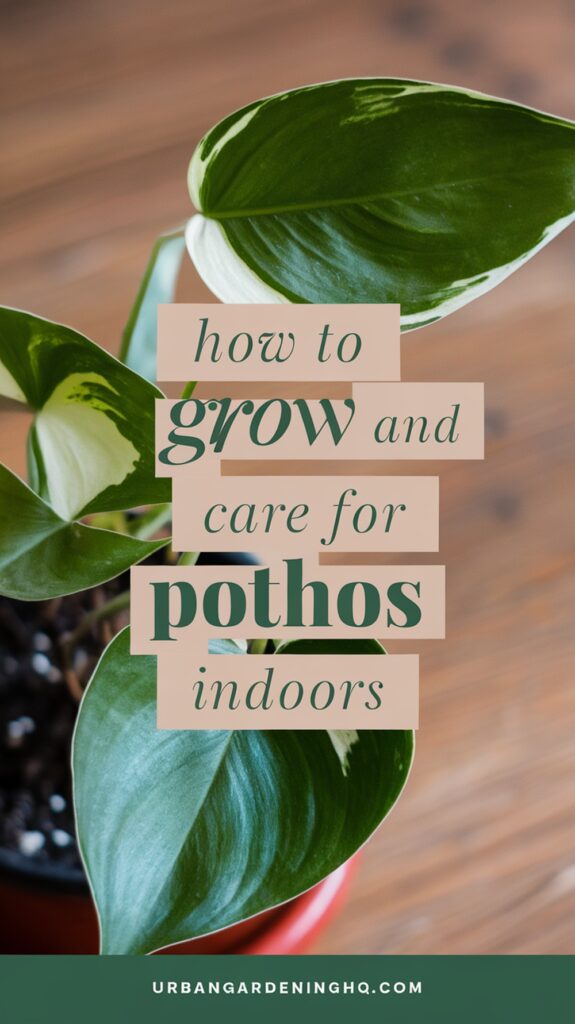
To keep my Pothos plant happy, I focus on the right soil and fertilization. The soil is key for my plant’s growth, giving it nutrients, water, and air. I choose a well-draining soil mix that’s rich in organic matter.
This mix prevents waterlogged soil, which can harm my plant. For fertilization, I stick to a regular schedule. A balanced, water-soluble fertilizer is best, as it offers a wide range of nutrients.
I also adjust fertilization based on the season. For example, I fertilize more during the growing season to support growth.
Key Considerations for Pothos Soil and Fertilization
- Choose a well-draining soil mix to prevent waterlogged soil
- Use a balanced, water-soluble fertilizer for optimal nutrient uptake
- Adjust fertilization schedules according to the time of year and plant growth
- Monitor soil pH levels to ensure they remain within the ideal range for Pothos
By following these guidelines, I’ve helped my Pothos thrive. With the right soil, fertilization, and care, your Pothos can also flourish. Enjoy its beautiful, trailing vines for years.
Mastering Pothos Propagation Methods
Exploring indoor gardening, I found that growing Pothos plants is rewarding. It’s a way to share plants with loved ones or grow more for myself. Propagation is key in plant care and is surprisingly simple. I can grow new Pothos plants using stem or leaf cuttings, or by dividing them.
To start, I pick healthy stems or leaves from my Pothos. Then, I cut them into pieces, ensuring each has a node. I plant these in a potting mix that drains well and keep the soil damp. With the right care, my new plants will flourish, adding beauty and purifying the air indoors.
Propagation offers many benefits:
- Sharing plants with friends and family
- Creating new plants for my own space
- Increasing the number of plants for indoor gardening
Learning to propagate Pothos plants has enriched my indoor gardening experience. It lets me share my knowledge with others, helping them start their plant care journey.
Creative Ways to Display Your Pothos

Exploring houseplants, I found Pothos plants are great for air and easy care. They also beautify your home. There are many ways to show off your Pothos, like using hanging baskets. They add elegance to any room.
You can also train your Pothos to climb up a trellis or wall. This brings greenery to blank spots and purifies the air. For a softer look, try shelf or tabletop displays. They add interest without overwhelming the space.
Here are more ideas for showing off your Pothos:
- Use a macrame hanger for a bohemian vibe
- Make a living wall with a trellis or structure
- Show off your Pothos in a colorful planter or pot
Being creative with your plant display brings many benefits. You get better air and a more beautiful home.
Troubleshooting Common Pothos Problems
As a pothos plant owner, I’ve faced many common issues. It’s key to know these problems and how to fix them. Proper plant care helps avoid many of these problems.
Pests, diseases, and environmental factors can harm pothos plants. Knowing these risks helps you prevent them. Troubleshooting these issues is easy with the right knowledge.
To tackle common pothos problems, consider these steps:
- Check your plant’s lighting conditions to ensure they are not too harsh or too dim.
- Adjust your watering schedule to prevent overwatering or underwatering.
- Inspect your plant regularly for signs of pests or diseases.
By following these tips and staying on top of your plant care, you can prevent many common problems. This keeps your pothos happy and healthy.
Air-Purifying Benefits of Pothos Plants
I’ve been learning about Pothos plants and how they clean the air in my home. They not only make my space look better but also make it healthier. Having Pothos plants means I can breathe cleaner air and might not need air purifiers as much.
Research shows that Pothos and other houseplants can remove harmful substances from the air. For example, visiting urban gardening websites can teach us about their air-purifying abilities. This knowledge helps us create a better, greener indoor space.
Scientific Findings on Air Purification
Studies have found that Pothos plants can remove pollutants like formaldehyde and benzene from the air. They do this by absorbing these pollutants through their leaves and roots. Then, they break them down into safe compounds. Knowing this, I can place and care for my Pothos plants to get the most air-purifying benefits.
Optimal Placement for Air Purification
To get the most out of Pothos plants, place them in areas with bad air. This includes rooms with little air flow, like basements or bathrooms. Or areas with lots of pollution, like near busy roads. By placing my Pothos plants wisely, I can make my home healthier and more beautiful.
Seasonal Care and Maintenance Tips
As a Pothos plant owner, I’ve learned that adapting to the changing seasons is key. The right care and maintenance make indoor gardening more fun and rewarding. Here, I’ll share tips on caring for your Pothos in different seasons.
Understanding your plants’ needs is vital in indoor gardening. In spring and summer, my Pothos needs more water and food. I use a balanced fertilizer to help it grow well. But in fall and winter, I water and fertilize less to avoid problems.
Spring and Summer Care
- Increase watering frequency to every 7-10 days
- Fertilize with a balanced fertilizer once a month
- Prune long vines to maintain shape and promote new growth
Fall and Winter Adjustments
- Reduce watering frequency to every 4-6 weeks
- Discontinue fertilization during the winter months
- Protect your Pothos from cold drafts and temperatures below 50°F
By following these tips, your Pothos will thrive all year. Watch how your plant reacts to the seasons and adjust your care. With the right care, your Pothos will add beauty to your space.
Pet Safety and Pothos Placement
As a pet owner and indoor gardener, keeping your pets safe is key. Pothos plants are toxic to pets and can harm them if eaten. It’s important to take steps to protect both your pets and plants.
When gardening indoors, pet safety should be your main concern. Here are some tips to help:
- Keep your Pothos plant out of reach of your pets to avoid any harm.
- Choose a safe spot for your plant, like a high shelf or hanging basket, to prevent accidental ingestion.
- Know the signs of plant toxicity in pets, such as vomiting, diarrhea, and lethargy. Seek vet care right away if you think your pet ate the plant.
By following these simple steps, you can enjoy gardening indoors while keeping your pets safe. Always put pet safety first and take steps to prevent harm. With a bit of planning and awareness, you can create a safe and healthy space for both your pets and Pothos plant.
Conclusion: Growing Success with Your Pothos Journey
As we wrap up our Pothos journey, I feel proud and accomplished. Growing a Pothos plant has been rewarding, letting me connect with nature. It also brings many benefits, like purifying the air.
By following the care tips, my Pothos thrives. It brightens my home and makes the air cleaner. This journey has taught me a lot about indoor gardening and the Pothos plant’s beauty.
Starting your Pothos journey? Remember to enjoy the process and adapt to your plant’s needs. With what you’ve learned, you can grow a thriving Pothos. It will bring joy and improve your indoor space. Happy growing, and may your journey be a success!
